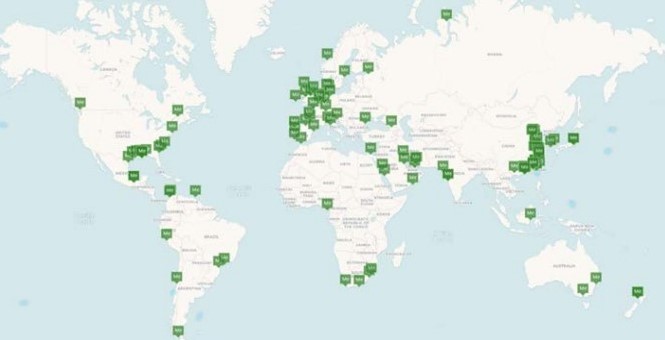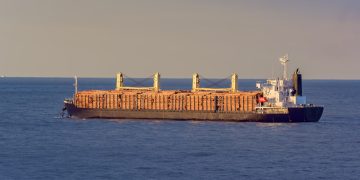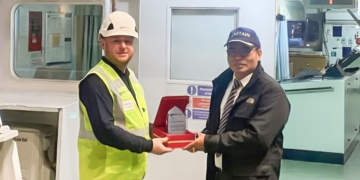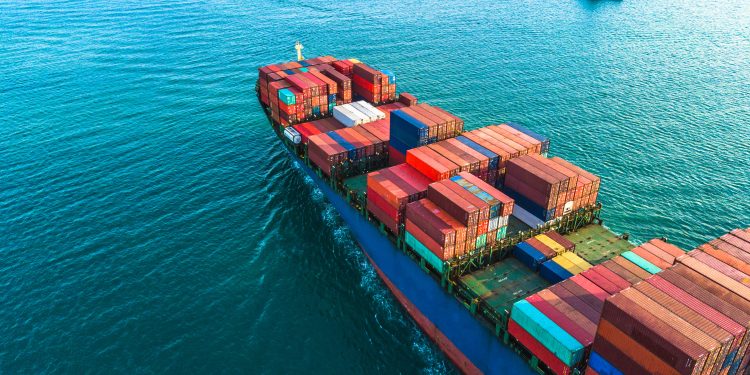In its updated “Alternative Fuels for Containerships” paper series, DNV examines the different alternative fuel options and provides an overview of the most important technical and commercial considerations for the container sector.
This second edition explores methanol as an option to reduce GHG emissions significantly starting today. Amongst others, this paper looks at the following aspects:
- Handling of methanol compared to other fuel types
- Safe and efficient bunkering
- Ship design and certification process implications
- Ship fuel technology
Methanol Infrastructure
Existing land-based oil bunkering facilities can relatively easily be adjusted to offer methanol as fuel. Hence, locations where methanol terminals are already available could also offer methanol as fuel with little effort, if needed.

Bunkering
The location of bunker stations must be carefully considered, with several factors in mind, to ensure safe and efficient transfer of fuel from the bunker source. The optimal location would in some cases be areas on open decks, which might be conveniently designed on feeders and small-sized container carriers, or other designs where hazardous zones and cargo operations make it feasible. The design must consider the location of openings into living quarters, service spaces, and control stations.
Distance limitations of 15 m set out in classification rules must be adhered to. The high freeboard of large containerships means it is not always possible to locate bunker manifolds in open air to achieve a well-ventilated environment during bunkering operations. Therefore, specially dedicated compartments may have to be arranged. The enclosed or semi-enclosed bunker stations have to be segregated from adjacent spaces by means of gas-tight and liquidtight bulkheads. Ventilation becomes an important factor to avoid methanol vapours accumulating in bunkering compartments.
Efficient mooring is necessary for the safety of bunkering operations. Due consideration must be given to the arrangement of the mooring equipment to ensure compatibility with bunkering ships. Mooring lines should pass through fairleads and secured bollards and beats with an adequate safe workload. This especially concerns ships with high freeboard, for which chafing of mooring lines at the chocks must be prevented by all means.
Gas/fire detection
A reliable gas/fire detection system is another important safety component of the LFL fuel system.
In general, leaks of methanol are characterized by fast and complete vaporization. Methanol is also more flammable than other ship fuels and is known for its low detectability, as it burns with a nearly invisible flame.
Therefore, a combination of different fire (heat, optic and smoke) and gas (IR principle) detectors shall be implemented in the dry compartments in which components of the LFL fuel system are installed. Such installations are required in engine and fuel preparation rooms.
Bunker stations, unless arranged on open decks with ample ventilation, have to be equipped with gas detection too.
Gas detection shall be continuously carried out, therefore the sampling principle is not applicable. Duplication of the detectors is necessary to activate the emergency shutdown (ESD) system.
Hazardous Areas
#1 Hazardous area Zone 0
- The interiors of fuel tanks, pipes and equipment containing LFL;
- Any pipework for pressure relief or other venting systems for fuel tanks.
#2 Hazardous area Zone 1
- Cofferdams and other protective spaces surrounding the LFL fuel tanks;
- Fuel preparation rooms;
- Open deck and semi-enclosed spaces on deck, within 3 m of any fuel tank outlet, gas or vapour outlet, manifold valve, valve, pipe flange and the fuel preparation room’s ventilation outlets;
- Fuel tank pressure/vacuum (P/V) vent outlets, within a vertical cylinder of unlimited height and 6 m radius cantered upon the centre of the outlet, and within a sphere of 6 m radius below the outlet;
- Open deck and semi-enclosed spaces on deck, within 1.5 m of fuel preparation room entrances, fuel preparation room ventilation inlets and other openings into Zone 1 spaces;
- Enclosed or semi-enclosed spaces in which pipes containing fuel are located; for example, ducts around fuel pipes, and semi-enclosed bunkering stations.
Hazardous area Zone 2
- Areas within 1.5 m surrounding open or semi-enclosed spaces of Zone 1;
- Spaces 4 m beyond the cylinder and 4 m beyond the sphere defined for vent mast outlets;
- Air locks.

































































